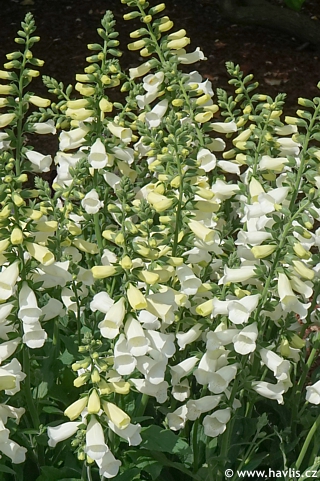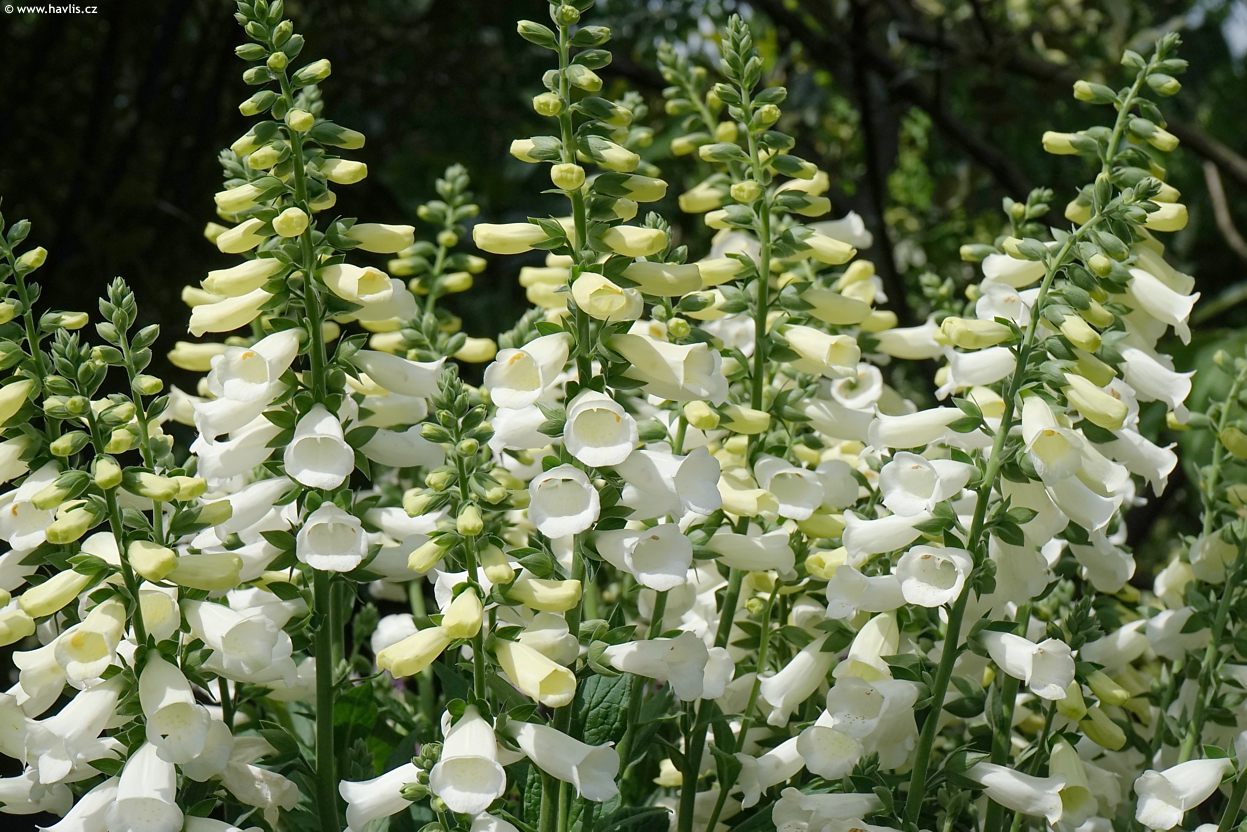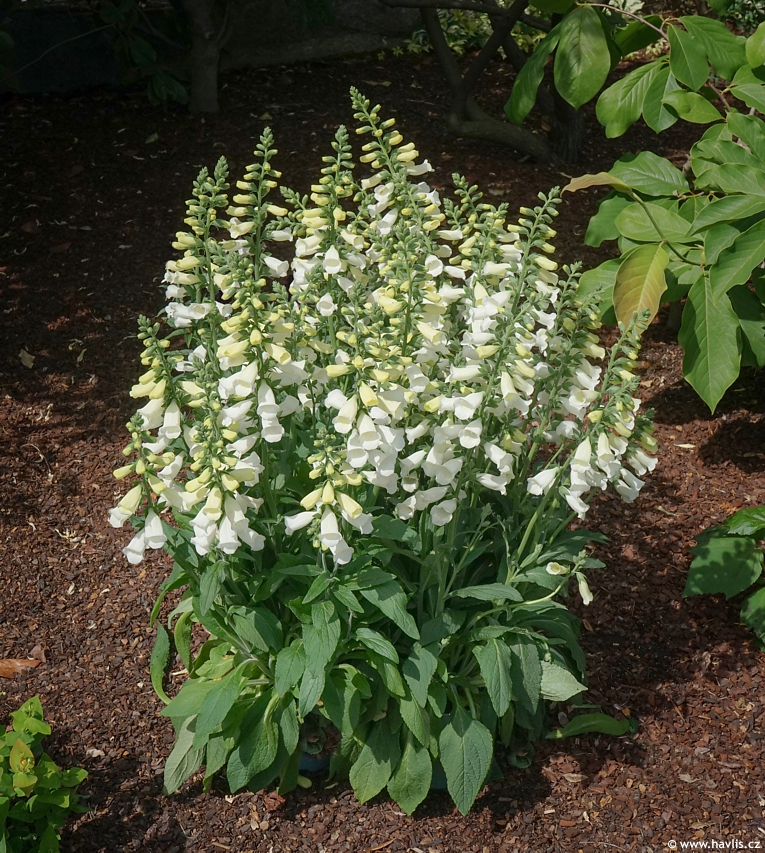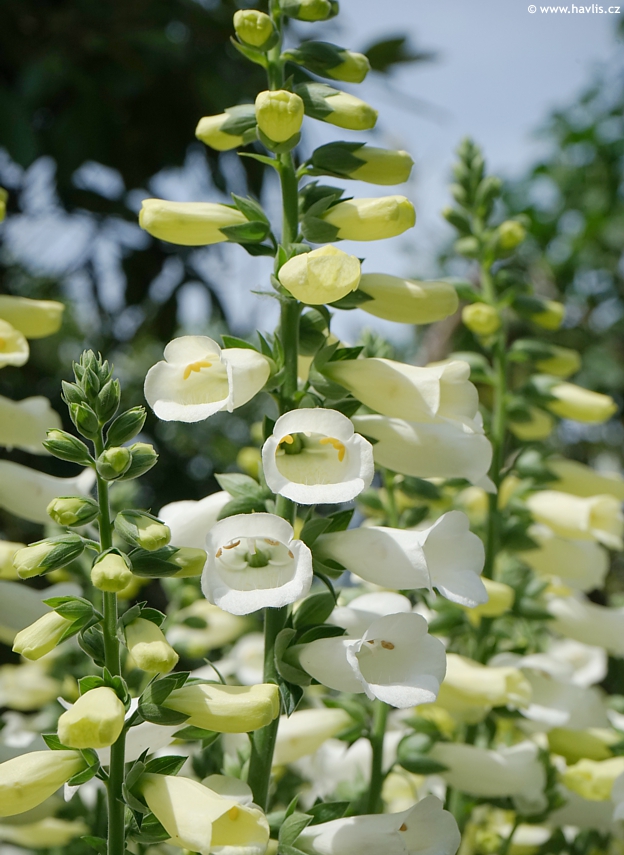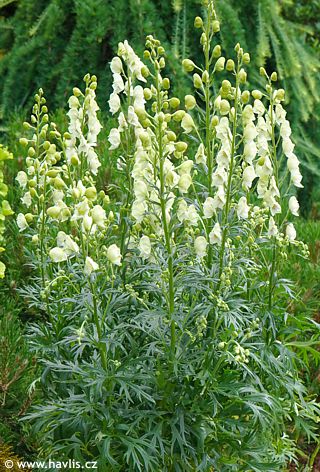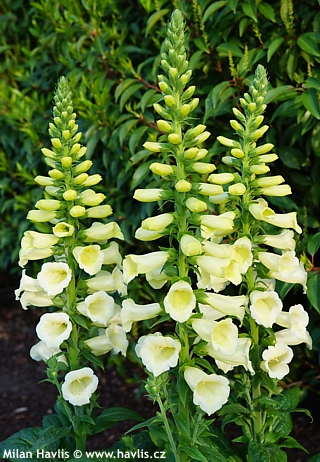Digitalis purpurea 'LUCAS WHITE' foxglove
Digitalis
Common foxglove is a European native and is found marginally in our country, too. Its flowers are so attractive that breeders keep hybridizing them and every now and then they introduce a new, improved variety. These improvements usually involve not just pretty flowers, but mainly the plants’ life span – in the wild common foxglove is a biennial which needs one whole year for plant maturation to produce flowers the year after. No one is so patient today, therefore, new varieties are hybrids eliminating the waiting part so they either flower in their first year or they behave like clumping perennials without a need for self-seeding.
Lucas is a small foxglove series offering extended blooming time, various flower colours, and in one case also silvery foliage. Lucas White, however masculine the name sounds, is more like a bride dressed in the most elegant and beautiful wedding dress. Its creamy white flower buds burst into pure white tubular flowers with less conspicuous, pale chartreuse dots inside the throat. The first flowers are borne along about 60-70 cm tall stems and while they keep opening, secondary stems are growing from the ground. They reach some 30 cm and also bear flowers. Lucas is a short-lived perennial or a biennial which needs to set seeds for another generation and bloom in its second year.
Leaves are smaller and thinner than those on most other foxglove varieties, broadly lance-shaped, mid green, conspicuously veined. Foxglove is a medical plant but also quite toxic. Even though it does not make any fruit-like berries that would attract children, it is not recommended for mass plantings near playgrounds, school yards, or kindergartens.
Foxglove will grow in almost any soil apart from too wet or too dry. In the wild it is found in humus-rich soils in light woods and its margins, which means that it will love partial shade in your garden, or full sun if kept moist. Excess fertilizing may result in production of enormous leaves but no flowers. Hardy to about -34 °C (USDA zone 4).
Last update 06-06-2024.
Goods are shipped all over Europe. For Russia and U.K. and for further details please read about SHIPPING OPTIONS HERE.
Are you interested in a serious discount for orders NOV-FEB? Check your options here.
THE PRICES INCLUDE VAT of 15%. For quick conversion you can use 1 CZK = approx. 0.04 EUR
- STANDARD QUALITY - Plants of this group are 1st class quality with number of branches and overall density adequate to their size and age, considering they were container grown.
- DE LUXE QUALITY - This label guarantees a luxurious quality of manually selected plants that, compared to their height and age, are exceptionally dense and beautiful.
- EXTRA - These plants are usually mature and bigger specimens with exceptional overall appearance.
- STANDARD (as described in the plant form) means a tree with a trunk of 190-210 cm and a crown at the top, unless specified differently. The commercial size for trees is their girth measured in the height of 1m from ground.
- HOBBY - These plants are of the same quality as our standard-quality plants but younger and therefore cheaper.
- SHRUB - a woody plant with branches growing bushy from the ground level.
- HALF-STANDARD or MINI-STANDARD - a small tree with shorter trunk, its size is usually specified.
- FEATHERED - These are trees with branches growing already from the base of the trunk and up along the stem.
- GRASSES and PERENNIALS - Sizes given usually read the diameter of the pot or the clump, as specified.

































